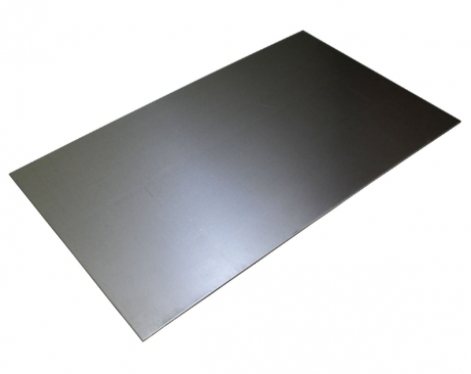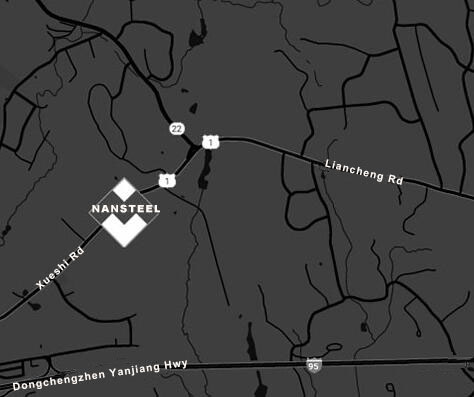Mild steel plate is a steel plate made of low carbon steel as the base material. Low carbon steel, with a carbon content of less than 0.25%, is a type of carbon steel. It is called soft steel due to its low strength and hardness. It covers most of the ordinary carbon structural steel and some high-quality carbon structural steel.
Performance advantages of mild steel plate
1. Excellent processing performance: high plasticity and toughness, not easy to break in cold bending, stamping and other forming processes, suitable for the manufacture of complex-shaped parts, such as automobile covers and home appliance shells.
2. Good weldability: low carbon content, not easy to crack during welding, high matching degree between weld strength and parent material, no need for complex pretreatment, widely used in steel structure welding.
3. Obvious cost advantage: simple raw materials and production process, lower price than high carbon steel and alloy steel, suitable for large-scale batch application, reducing enterprise production costs.
4. Easy to modify and improve: corrosion resistance and hardness can be enhanced through heat treatment (such as annealing) or surface treatment (galvanizing, painting), and expand applicable scenarios.
5. Good environmental protection and recycling: It is a recyclable material with a recycling rate of more than 90%, which is in line with the trend of green manufacturing and reduces resource waste.
Of course, mild steel plates also have some shortcomings, such as low hardness and strength, which limits their application in some scenarios with high strength requirements; poor wear resistance, and a short service life in environments that require long-term friction.

Application areas of mild steel plate
1. In the construction field, it is often used to build roofs, walls and structural support components of industrial buildings such as factories and warehouses. For example, the roofs and walls of some large logistics warehouses make extensive use of low-carbon steel plates, which can withstand a certain weight and are easy to install.
2. In the field of automobile manufacturing, mild steel plates are the main material for car body manufacturing. Many of the car body panels, chassis, engine parts, etc. are made of it. For example, most of the body structures of common family cars are low-carbon steel plates, which ensures the strength and safety of the body while reducing costs.
3. In the field of mechanical manufacturing, mild steel plates can be used to manufacture parts and components of various machines and equipment, such as gears, bearings, screws, etc., because of their good processing properties, they are easy to manufacture and subsequently process.
4. In the field of home appliances, mild steel plates are also commonly used in the outer shells and internal structural components of refrigerators, washing machines, air conditioners, etc., providing strength and durability for home appliances.
Development Trend of Mild Steel Plate
1. From a policy perspective, countries have introduced energy-saving and emission-reduction policies. As a key area of carbon emissions, the steel industry is developing mild steel plates in line with environmental protection trends. For example, China has issued documents such as the "Implementation Plan for Energy Conservation and Emission Reduction in the Steel Industry" to promote industry transformation and upgrading and provide policy support for the development of low-carbon steel plates.
2. Technological innovation has also injected strong impetus into the development of mild steel plates. On the one hand, researchers have continuously optimized production processes, such as using advanced steelmaking technology to reduce energy consumption, and adding micro-alloy elements to improve material performance and reduce material usage; on the other hand, new surface treatment technologies are also constantly emerging, which can improve the aesthetics and corrosion resistance of low-carbon steel plates and extend their service life.
3. In terms of market demand, the construction, automobile, home appliance and other industries continue to expand, and the demand for mild steel plates continues to increase. The acceleration of urbanization, the rise of a large number of infrastructure construction and real estate projects are inseparable from mild steel plates. When the automotive industry pursues cost-effectiveness, mild steel plates have become a key material due to their cost advantages. The rapid development of emerging markets will also create more demand. In addition, the production of mild steel plates has more advantages under the global trend of green manufacturing and green building materials, and its demand is expected to rise further.
Read more: Advantages and Disadvantages of Mild Steel Plates
Performance advantages of mild steel plate
1. Excellent processing performance: high plasticity and toughness, not easy to break in cold bending, stamping and other forming processes, suitable for the manufacture of complex-shaped parts, such as automobile covers and home appliance shells.
2. Good weldability: low carbon content, not easy to crack during welding, high matching degree between weld strength and parent material, no need for complex pretreatment, widely used in steel structure welding.
3. Obvious cost advantage: simple raw materials and production process, lower price than high carbon steel and alloy steel, suitable for large-scale batch application, reducing enterprise production costs.
4. Easy to modify and improve: corrosion resistance and hardness can be enhanced through heat treatment (such as annealing) or surface treatment (galvanizing, painting), and expand applicable scenarios.
5. Good environmental protection and recycling: It is a recyclable material with a recycling rate of more than 90%, which is in line with the trend of green manufacturing and reduces resource waste.
Of course, mild steel plates also have some shortcomings, such as low hardness and strength, which limits their application in some scenarios with high strength requirements; poor wear resistance, and a short service life in environments that require long-term friction.

Application areas of mild steel plate
1. In the construction field, it is often used to build roofs, walls and structural support components of industrial buildings such as factories and warehouses. For example, the roofs and walls of some large logistics warehouses make extensive use of low-carbon steel plates, which can withstand a certain weight and are easy to install.
2. In the field of automobile manufacturing, mild steel plates are the main material for car body manufacturing. Many of the car body panels, chassis, engine parts, etc. are made of it. For example, most of the body structures of common family cars are low-carbon steel plates, which ensures the strength and safety of the body while reducing costs.
3. In the field of mechanical manufacturing, mild steel plates can be used to manufacture parts and components of various machines and equipment, such as gears, bearings, screws, etc., because of their good processing properties, they are easy to manufacture and subsequently process.
4. In the field of home appliances, mild steel plates are also commonly used in the outer shells and internal structural components of refrigerators, washing machines, air conditioners, etc., providing strength and durability for home appliances.
Development Trend of Mild Steel Plate
1. From a policy perspective, countries have introduced energy-saving and emission-reduction policies. As a key area of carbon emissions, the steel industry is developing mild steel plates in line with environmental protection trends. For example, China has issued documents such as the "Implementation Plan for Energy Conservation and Emission Reduction in the Steel Industry" to promote industry transformation and upgrading and provide policy support for the development of low-carbon steel plates.
2. Technological innovation has also injected strong impetus into the development of mild steel plates. On the one hand, researchers have continuously optimized production processes, such as using advanced steelmaking technology to reduce energy consumption, and adding micro-alloy elements to improve material performance and reduce material usage; on the other hand, new surface treatment technologies are also constantly emerging, which can improve the aesthetics and corrosion resistance of low-carbon steel plates and extend their service life.
3. In terms of market demand, the construction, automobile, home appliance and other industries continue to expand, and the demand for mild steel plates continues to increase. The acceleration of urbanization, the rise of a large number of infrastructure construction and real estate projects are inseparable from mild steel plates. When the automotive industry pursues cost-effectiveness, mild steel plates have become a key material due to their cost advantages. The rapid development of emerging markets will also create more demand. In addition, the production of mild steel plates has more advantages under the global trend of green manufacturing and green building materials, and its demand is expected to rise further.
Read more: Advantages and Disadvantages of Mild Steel Plates









